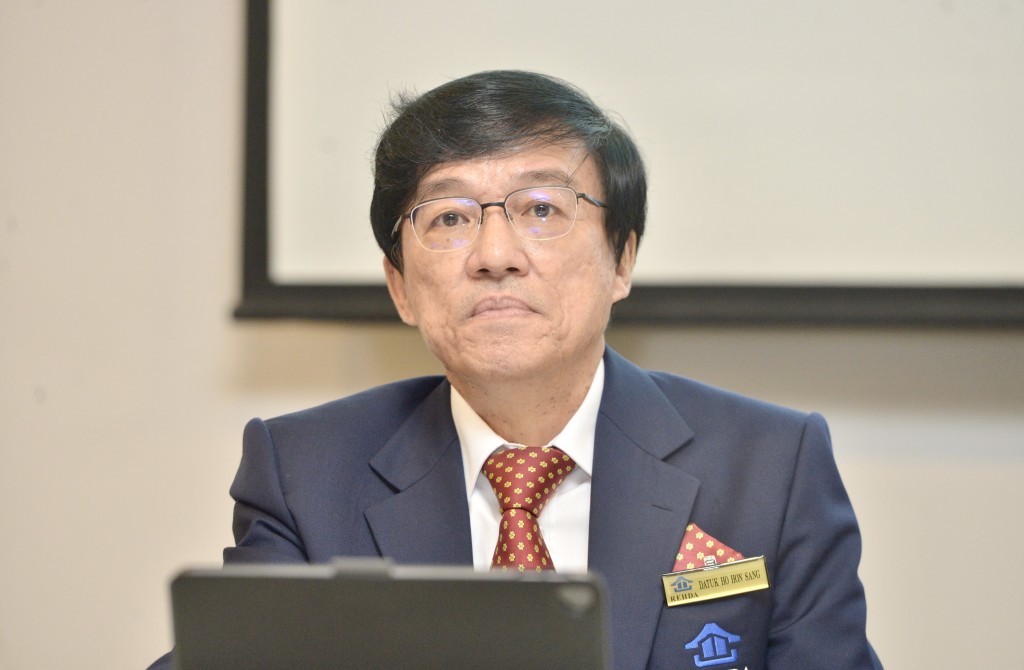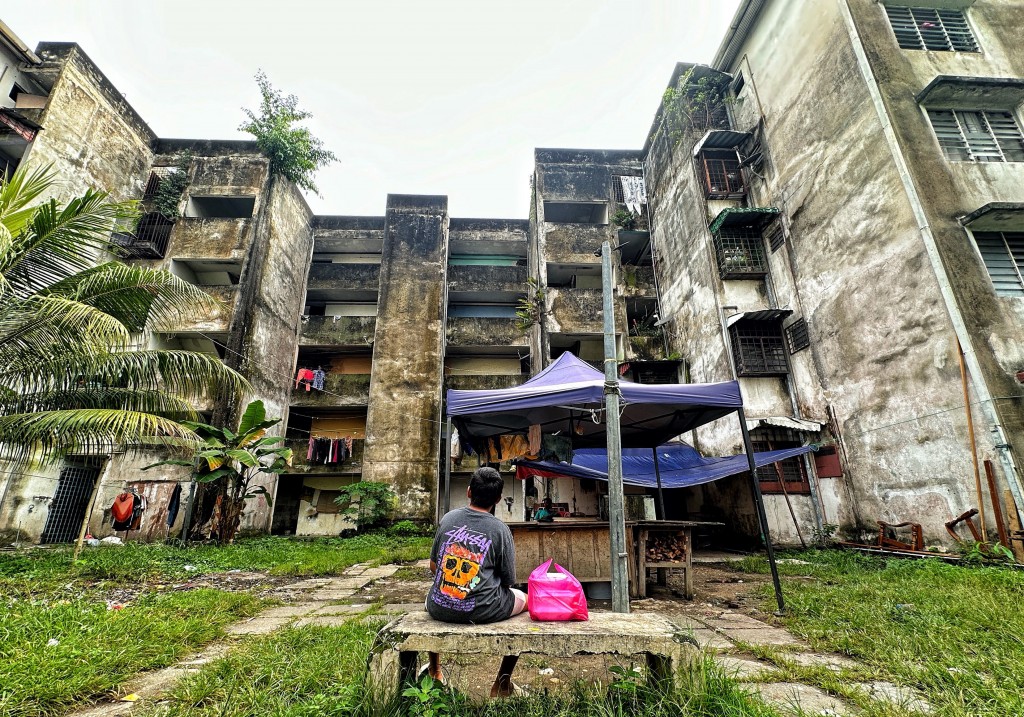
Government initiatives are in place to collect data systematically for better governance. At the Federal level, the Housing Integrated Management System (HIMS) is one, while the Smart Selangor Operations Centre (SSOC)(pic) is a state initiative. — KK SHAM/The Star
Comprehensive study tops Rehda’s wishlist for government
By Yip Wai Fong
Unlike countries such as Singapore, provision of affordable housing in Malaysia is led by private developers, who provide the capital, project implementation, marketing and delivery. But they are also an agent, implementing the government’s affordable housing quotas across the board without the flexibility to adapt the development in accordance with factors such as location suitability and demands.
Developers incur holding costs when an affordable housing development is not being taken up, with little recourse to clear the inventory as the prices are controlled and already low. Furthermore, affordable housing is funded partly by open market housing, or cross-subsidy, and therefore having unsold affordable housing puts pressure on developers to buffer against the heightened cost with more cross-subsidy.
As such, the high percentage of completed but unsold units, popularly known as the overhang, in the RM300,000 and below price range – the price range of affordable housing – has caught developers’ attention. Real Estate and Housing Developers’ Association (Rehda) president Datuk Ho Hon Sang said it is high time the provision of affordable housing be guided by a systematic approach, backed by comprehensive data for its supply, demand and locations.
At the StarProperty Budget 2025 Roundtable, Ho urged for a collaborative effort between government agencies and industry stakeholders to conduct a thorough study on affordable housing demand and supply. Speaking to StarProperty after the event, Ho elaborated the proposal.
StarProperty: What is the rationale for a study on affordable housing?
Ho: Affordable housing is still a very current agenda that’s being talked about at the Federal and state government level. But we at Rehda have been asking: “How does the government derive the number (the affordable housing requirement) that it announces? Where did the number come from?” I personally don’t have the answer and Rehda also does not have the answer.
That's why our Budget 2025 wishlist to the Finance Ministry (MOF) and the Housing and Local Government Ministry (KPKT) is for the government to conduct a study that will inform the real estate industry of how many Rumah Mampu Milik units we are short of, where they are needed, how long we need to build them, and when we can slow down.
We believe the KPKT should spearhead the study but as KPKT needs financial resources, so we also spoke to the MOF. The government has the necessary resources – the Statistics Department, agencies in affordable housing such as PR1MA and SPNB, and the local authorities. These could be the sources of data. The government can get the agencies to collaborate on the study.
StarProperty: Has Rehda come out with a list of detailed aspects to be studied?
Ho: There is none at this moment and that's where we hope that the government will consider. In the process of consideration, they can invite Rehda. We can bring our experienced developers and consultants, and we discuss (together). We are very open for discussion because this is important, proper planning needs to be in place.
StarProperty: Are there limitations or information gaps in datasets on property that are currently available?
Ho: Well basically, it's the absence of data relating to supply and demand of affordable housing. The government as a whole needs to initiate the call for collaboration among its various agencies to come up with the study of supply and demand. Of course, at this moment we don’t have that (data) so we came up with the suggestion, be it by the National Property Information Centre (Napic), KPKT or National Housing Department (JPN).
I think the government is also serious about this, (I think) the Housing Integrated Management System (HIMS) will lead to that eventually, but it needs a lot of data. HIMS just started not too long ago so the data collection is on-going, but hopefully when enough data has been collected, it (can be used to) advise us on the next course of action. HIMS shows that the government has thought about it, but let’s give the government more encouragement – we are behind them, and we can move together.
Note: Launched in 2022, HIMS is a one-stop platform for developers to apply for licensing, advertising and sales permits, and provide real-time updates on housing project statuses, as well as for the generation of electronic Sales and Purchase Agreements (eSPA). HIMS serves as KPKT’s one-stop platform to regulate, manage and gather data on housing development.
StarProperty: Can Rehda conduct the study using its own resources? It has members throughout the country.
Ho: There are about 1500 members and of course, that’s 70% or 80% of the total developers in the country. But the data we collected for our surveys, I would say it is not conclusive, it's just an indication. Nevertheless, it gives us a feeling of whether it’s okay or we need to take some action. I wouldn’t say it's a shortcoming, that's why we need to work with bigger stakeholders like the government because they have the machinery, and they can rope in the professors and experts in statistics who are full-time. Rehda members are not; we are an NGO.
StarProperty: What about Napic’s data? Is it granular enough to provide Rehda with the information it needs?
Ho: Napic always invite us to their launchings in every year. In March, they present the market report for the year while in September they usually present about the current half year. It does give us an indication of the health and direction the property sector is heading.
StarProperty: So developers are getting the same Napic data as the general public?
Ho: Yes, so in that sense, it is consistent and transparent but we, as developers, have to use our business judgement, this (Napic data) may be a general picture of the whole country and may not apply to certain local areas. So that’s something interesting about business, it cannot be one size fits all.

Data-driven approach is necessary for the provision of affordable housing, said Ho — YAP CHEE HONG/The Star
StarProperty: Rehda also asked for a National Housing Trust for affordable housing. Has that got to do with the study that you recommended?
Ho: The National Housing Trust is about the implementation of affordable housing by the government instead of private developers or public-listed developers and the modus operandi is, developers or every development will contribute a certain reasonable percentage to the Trust and Rehda can also be a member of this Trust to either advise or assist in the execution and be supportive, but I don't think we put this request in our budget wishlist this year, this is just something we suggested in media releases. It is too soon to do that.
But just assuming the government is agreeable to forming the National Trust, then the study won’t be so prominent, since the government were to take over the affordable housing provision and fund it. But if you ask me, by right, it (the study) should be done, irrespective of who is implementing affordable housing. Having a good set of guides to execute something is always good.
Note: Several developers have also called for a National Housing Trust on affordable housing to be set up when asked by StarProperty for their Budget wishlist. The proposal was also mentioned at the StarProperty Budget 2025 Roundtable.
StarProperty: Developers have said that some affordable housing is being built at places that are not conducive to the targeted market, but there is also open market housing in the area. How are they different?
Ho: Developers are businessmen. In business, we must do an assessment to make sure that the financial feasibility works, for example when you want to build something at Serendah and Rawang. Now as far as the respective state government is concerned, their policy is very straightforward. As long as a developer has, say 100 units of houses there, it is required to build 40 units of affordable housing irrespective of the location, so if you want to do development in Semenyih, you have 1,000 units there, you have to build 400 units of affordable housing. We ask that the study include the feasibility of the location which is also related to ease of transportation, and the expenses incurred going to work for affordable housing residents. It's a comprehensive study, perhaps the government (will come to conclude from the study that in certain areas) that affordable housing is not needed at certain places, but the developer can compensate for not building it there by building it elsewhere that is more needed. This is like an all-encompassing study from various angles, the demography, the behaviour of the people, the ease of transportation, the availability of schools, the availability of hospitals and facilities.
StarProperty: In the scenario where we have conclusive data about how many units to build and where, how do we then ascertain that the targeted group can afford them?
Ho: I think the housing boards in the respective states are being able to ascertain who can afford the homes. For example, in Selangor, it is quite an organised process whereby the applications are made online. The board shares the information with developers for them to approach the prospects (the applicants).
There are also good initiatives such as the Housing Credit Guarantee Scheme (SJKP) Madani and SJKP for the lower income group. It is also our wish for the government to continue with these initiatives so that more home ownership can result from it.
Stay ahead of the crowd and enjoy fresh insights on real estate, property development, and lifestyle trends when you subscribe to our newsletter and follow us on social media.














































